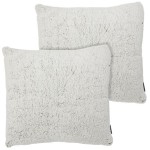Transforming Interiors with Nature Room Decor
Nature room decor encompasses a design philosophy that seeks to integrate elements of the natural world into interior spaces. The overarching goal is to create environments that are not only aesthetically pleasing but also promote a sense of well-being, tranquility, and connection to the outdoors. This approach goes beyond simply adding a few houseplants; it involves a deliberate and holistic consideration of materials, colors, textures, and spatial arrangements to evoke the essence of nature.
The allure of nature room decor stems from a deep-seated human connection with the environment, often referred to as biophilia. This innate affinity for nature is believed to have evolutionary roots, with studies suggesting that exposure to natural elements can reduce stress, improve cognitive function, and enhance overall mood. By incorporating nature-inspired design into homes and workplaces, individuals can capitalize on these benefits and create spaces that are conducive to both physical and mental health.
The trend towards nature-inspired interiors has been steadily gaining momentum, driven by a growing awareness of the importance of sustainability and a desire to create more mindful and restorative living spaces. As urban populations continue to expand, and individuals spend increasing amounts of time indoors, the need for biophilic design becomes even more pronounced. Nature room decor offers a practical and accessible way to bridge the gap between the built environment and the natural world, fostering a sense of harmony and balance within interior spaces.
Incorporating Natural Materials
The foundation of nature room decor lies in the strategic use of natural materials. These materials not only possess inherent aesthetic appeal but also contribute to the overall sensory experience of a space. Wood, stone, bamboo, rattan, jute, and cotton are all common choices for furniture, flooring, wall coverings, and accessories. The key is to select materials that are sustainably sourced and minimally processed, allowing their natural textures and tones to shine through.
Wood, in particular, is a versatile material that can be used in a variety of ways to create a warm and inviting atmosphere. Reclaimed wood, with its unique character and history, is an excellent option for adding rustic charm to a space. Lighter woods, such as birch and maple, can create a bright and airy feel, while darker woods, such as walnut and mahogany, can add a sense of sophistication and depth.
Stone, another popular choice, can be used for flooring, fireplaces, and accent walls. Natural stone, such as granite, marble, and slate, offers a range of textures and colors that can complement a variety of design styles. The cool, grounding effect of stone can create a sense of stability and connection to the earth. Alternatively, materials like cork can be used as wall coverings or even flooring for its warmth and sound-dampening qualities.
Beyond the structural elements, natural fibers like jute, seagrass, and cotton play a vital role in adding texture and warmth to a space. These materials can be used for rugs, curtains, cushions, and baskets, creating a layered and inviting environment. Organic fabrics, such as linen and hemp, are also excellent choices for upholstery and bedding, offering a soft and breathable alternative to synthetic materials.
The sourcing of these materials is ethically important. Opting for sustainable materials like bamboo or reclaimed wood helps to reduce the environmental impact of the decor. Furthermore, supporting companies that prioritize ethical labor practices ensures that the creation of the decor does not contribute to social injustice.
Utilizing Natural Light and Ventilation
Natural light and ventilation are crucial components of nature room decor. Maximizing the amount of natural light that enters a space can significantly enhance its ambiance and create a more vibrant and welcoming environment. Large windows, skylights, and glass doors are all effective ways to bring more natural light into a space. Furthermore, consider strategically positioning mirrors to reflect and amplify the available light, making a room feel brighter and more spacious.
Minimize the use of heavy curtains or blinds that can block natural light. Instead, opt for sheer or translucent fabrics that allow light to filter through while still providing some privacy. Alternatively, consider using adjustable blinds or shades that can be opened and closed as needed to control the amount of light entering the room.
Natural ventilation is equally important for creating a healthy and comfortable indoor environment. Open windows and doors whenever possible to allow fresh air to circulate and reduce the concentration of indoor pollutants. Consider installing fans or air purifiers to further improve air quality. Cross-ventilation, achieved by opening windows on opposite sides of a room, can be particularly effective in promoting air flow.
The implementation of passive solar design principles is also important for maximizing the benefits of natural light and ventilation. Proper orientation of a building can help to capture more sunlight during the winter months and minimize heat gain during the summer months. Overhangs and awnings can provide shade and reduce the need for air conditioning. These strategies can help to create a more energy-efficient and sustainable living environment.
Beyond the practical benefits, natural light and ventilation contribute significantly to the overall sensory experience of a space. The feeling of sunlight streaming through a window and the gentle breeze of fresh air can create a sense of connection to the outdoors and promote a feeling of well-being. The constant interplay of light and shadow throughout the day adds dynamism and visual interest to a room, making it feel more alive and engaging.
Integrating Plants and Greenery
The most direct way to bring nature into a room is through the incorporation of plants and greenery. Plants not only add visual appeal but also offer a range of health benefits, including improved air quality, reduced stress levels, and increased productivity. The selection of plants should be based on the specific environmental conditions of the room, including the amount of light, humidity, and temperature.
Consider incorporating a variety of plants with different shapes, sizes, and textures to create a visually interesting and dynamic display. Tall plants, such as fiddle-leaf figs or snake plants, can add vertical interest to a room, while trailing plants, such as pothos or ivy, can soften the edges of furniture and create a more relaxed and informal atmosphere. Succulents and cacti are excellent choices for low-maintenance options, while flowering plants can add a pop of color and fragrance.
Beyond individual plants, consider creating larger-scale green walls or vertical gardens to maximize the impact of greenery in a space. These installations can transform an entire wall into a living ecosystem, providing a dramatic focal point and enhancing the overall biophilic design. Vertical gardens can also be used to create privacy screens or to divide a room into different zones.
The placement of plants is also important. Consider placing plants near windows to maximize their exposure to natural light. Grouping plants together can create a more visually impactful display and can also help to increase humidity levels in the immediate vicinity. Hanging plants can be used to add visual interest and to free up floor space.
Careful consideration must be given to the maintenance of the plants. Watering schedules, fertilization, and pruning are each vital in order to ensure that greenery thrives within an indoor environment. Integrating smart technology, like self-watering planters, can help to make plant care manageable.
Beyond living plants, consider incorporating preserved moss walls or dried flower arrangements to add a touch of nature without the maintenance requirements. These options can be particularly useful for spaces that lack natural light or for individuals who have limited time for plant care. These components still provide a natural element to the décor, contributing to the overall biophilic design aesthetic.
The incorporation of natural forms and shapes can also contribute to the overall biophilic design. Organic shapes, such as curves and spirals, are often found in nature and can be incorporated into furniture, lighting, and accessories. These forms can create a sense of fluidity and movement within a space, evoking the natural world.
The key to successful nature room decor is to create a harmonious and balanced environment that reflects the individual's personal style and preferences. It is not about rigidly adhering to a set of rules but rather about embracing the principles of biophilic design and creating a space that feels authentic, inviting, and connected to the natural world. By thoughtfully incorporating natural materials, light, ventilation, plants, and natural forms, individuals can transform their homes and workplaces into havens of tranquility and well-being.

A Gorgeous Natural Bedroom Style Styles Home

5 Bedroom Designs For A Nature Lover Elcune Beautiful Decor Design

Rhianna S Earthy And Natural Girl Room

10 Beautiful Bedroom Ideas Inspired By Nature That Will Boost Your Mood Mocha Casa Blog

Nature Room Ideas

How To Incorporate Natural Decor Into Your Home Decorilla

Nature Inspired Decor Ideas Design Improvised

Épinglé Sur Wohimmerideen
Bringing Mother Nature Into Home Decor Luxe Interiors

37 Aesthetic Room Ideas For A Cozy Bedroom Chaylor Mads







